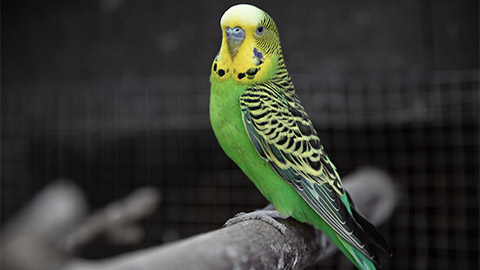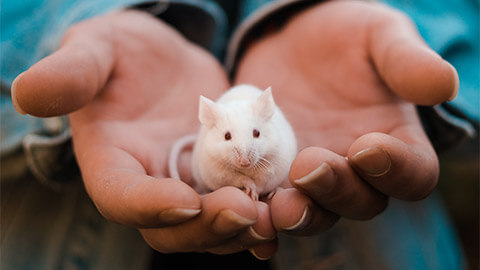There are four main principles associated with caring for sick (or suspected sick) animals according to the Pet Industry Association of Australia (PIAA). These are:
- Prompt and appropriate veterinary care must be provided for sick or injured animals and the owner notified where appropriate.
- Any sick animal, and all those in the same enclosure, and any injured animal, must be isolated in an area away from contact with the public and other animals until fully recovered or returned to the owner.
- Where treatment is impractical or unsuccessful, or in the situation of an emergency with no reasonable prospect of recovery, and not to act would constitute cruelty. Or when the owner cannot be located, or the owner has requested action, then the animal should be humanely destroyed (euthanised). For dogs and cats, this should only be performed by a veterinarian, other animals can be euthanised on-site by a trained operator.
- Veterinary advice (and possible post-mortem should be obtained in the event of unexplained illness or death.
Animal health conditions can be quite varied depending on the species and breed of the animal. Animal carers working in companion animal fields such as pet shops, urban veterinary clinics, and animal shelters will most probably be dealing with the medical conditions of dogs, cats, birds, and fish.
Other more specialised animal carers, for example, livestock veterinary workers or zoo staff may have other medical conditions that they must be familiar with. With all medical concerns, regular health checks are advisable along with the application of preventative treatment.
Heartworm
Parasites that infect the heart and arteries, can lead to heart failure and death. Dogs are exposed to the larvae through mosquito bites.
Symptoms of heartworm include:
- lethargy (tiredness without exercise)
- collapsing
- depression (not willing to fetch or play)
- coughing.
Prevention is the best treatment option as a cure is quite difficult and costly too. Options include:
- prevention via an annual injection
- prevention via monthly tablets
- prevention via topical treatments
- other medications can be utilised if heartworm is diagnosed, but sometimes surgery is required.
Vomiting and Diarrhoea
Might be caused by an infection known as parvovirus, which affects the gastrointestinal tract. Other causes of vomiting and diarrhoea are eating inappropriate foods or swallowing inappropriate objects, like food wrappings or chocolate.
Symptoms (other than the actual vomit/diarrhoea) include:
- blood in the vomit or faeces
- lethargy
- weight loss
- fever
- change in appetite.
Treatment options include:
- withholding food
- observation
- rehydration
- possible medication or surgery depending on the actual diagnosis.
Obesity
Pets are the same as people when it comes to obesity and being obese has negative health effects. Obese dogs have a higher risk of joint pain, liver diseases, and diabetes.
Symptoms of obesity include:
- obvious bulky/heavyset frame
- not being able to feel the dog's ribs without pressing very hard.
Treatment options include:
- low-calorie diet
- exercise regimes.
Parvovirus
Otherwise known as Parvo, is a highly infectious virus that attacks the gastrointestinal tract and cardiovascular systems of dogs. The main source of the virus is the faeces of infected dogs. Animals can become infected by ingesting the virus. Subsequently, the virus is then carried to the intestine where it invades the intestinal wall and causes inflammation. Parvovirus is highly contagious and resistant to the effects of heat, detergents, and alcohol so it can remain in the environment for up to a year after an infected dog has been there. This is why the virus can reoccur especially in unvaccinated dogs or in dogs where vaccinations have lapsed. Due to its stability, the virus is easily transmitted via the hair or feet of infected dogs, contaminated shoes, clothes, and other objects. Dogs that become infected with the virus and show clinical signs, will usually become ill within 7-10 days of the initial infection.
Symptoms of parvovirus include:
- bloody diarrhoea (can often be foul smelling)
- vomiting
- lethargy.
Treatment options include:
- prevention (vaccine) is the best option
- IV fluids
- antibiotics and antiemetics.
Distemper
Affects the respiratory system, the gastrointestinal system, and the central nervous system.
Symptoms of distemper include:
- sneezing
- coughing
- difficulty breathing
- fever
- possible seizures
- discharge of mucous from the eyes.
Treatment options are limited as distemper is fatal in 50% of cases and there is no specific cure, some dogs recover on their own.
- Prevention (vaccine) is the best option.
- Supportive care and observation.
Parainfluenza (Viral) and Bordetella (Bacterial) - Kennel Cough
A highly contagious upper respiratory tract disease that causes inflammation of the dog's windpipe. Bordetella can also infect cats, rabbits, and in rare cases, humans.
Symptoms of kennel cough include:
- dry hacking cough (this may begin to produce phlegm if secondary infection occurs)
- retching
- fever.
Treatment options include:
- prevention (vaccine) on an annual basis is the best option
- medications such as antibiotics can be used to treat the cough.
Ear Infections
Can be a common canine health problem, and it can be caused by allergies, yeast, ear mites, bacteria, hair growth deep in the ear canal, and more.
Symptoms of ear infections include:
- head shaking or head tilting
- redness of the ear canal
- a sore ear that is tender to the touch
- ear discharge
- smelly ear
- scratching at the ear.
Treatment options include:
- antibiotics (for bacterial infections)
- removal of blockage and cleansing (for obstructive infections).
Fleas and Flea Allergy Dermatitis
Blood-sucking parasites, visible to the naked eye. Fleas are a very common external problem for dogs. Some dogs may also develop Flea Allergy Dermatitis (FAD).
Symptoms of fleas and also flea allergy dermatitis include:
- scratching, chewing, or licking of skin
- rubbing skin against objects (like a tree or fence), especially common for FAD
- stained brown fur from licking, especially obvious on white coloured dogs
- hair loss
- rash
- wounds from excessive rubbing, typically on the lower back (near the base of tail), on the thighs, and belly.
Treatment options include:
- oral medications
- topical solutions
- powders
- medicated shampoos.

Lower Urinary Tract Disease
Feline lower urinary tract disease (FLUTD) can be fatal to cats and covers several conditions that affect a cat’s bladder.
Symptoms of lower urinary tract disease include:
- not using a litter box (or urinating inside on the floor)
- straining without producing any urine
- blood in the urine (extreme cases).
Treatment options include:
- IV fluids
- insertion of a urinary catheter
- pain medication
- medication to relieve swelling and spasms
- special diets.
Cat Flu
Feline respiratory disease or cat flu is a highly contagious upper respiratory infection. Transmission is via respiratory discharges, primarily sneezing. Possible causes may include feline calicivirus, feline herpes virus, rhinotracheitis.
Symptoms of cat flu include:
- conjunctivitis
- oral ulcers
- fever
- gingivitis
- miscarriage in pregnant cats
- sneezing
- nasal discharge
- ocular discharge.
Treatment options include:
- prevention (vaccine) is the best option
- isolation
- anti-viral medication
- eye drops
- antibiotics (to treat any secondary bacterial infection).
Cancer
The two most common types of cancers are Lymphosarcoma (a cancer of the intestine or chest) or squamous cell carcinoma (abnormal growths on the skin).
Symptoms of cancer include:
- lumps, swelling, and sores
- lethargy
- weight loss
- difficulty breathing
- vomiting
- difficulty urinating and defecating.
Treatment options are often limited but may include:
- chemotherapy
- surgery
- radiation
- immunotherapy.
Heartworm
The same parasite that affects dogs can also affect cats. There is no effective treatment for heartworm in cats – but fortunately, many cats recover on their own.
Symptoms of heartworm include:
- regular coughing
- respiratory problems
- vomiting.
Fleas
Blood-sucking parasites, visible to the naked eye. Fleas are a very common external problem for cats.
Symptoms of fleas include:
- scratching or licking
- hair loss
- skin infections
- flea dirt on the skin.
Treatment options include:
- oral medications
- topical solutions
- powders.
Kidney Disease
Kidney problems reduce a cat's ability to excrete waste, which causes a build-up of dangerous toxins in the bloodstream. It can be caused by several factors, such as high blood pressure, infections, kidney stones, cancer, and old age.
Symptoms of kidney disease include:
- decreased appetite
- weight loss
- vomiting
- diarrhoea
- lethargy.
Treatment options include:
- surgery to remove blockages
- IV fluids
- special diets
- medication.
Feline Immunodeficiency Virus (FIV)
A virus that depletes the number of white blood cells and eventually makes the cat less able to fight off infection. It is a very slow-acting virus, therefore many cats with FIV enjoy a normal lifespan with no apparent problems. The virus is usually transmitted through a deep penetrating bite (FIV cat to non-FIV cat) where the virus (in the saliva) is injected directly into the bloodstream. Bites of this kind are rare and normally only occur in free-roaming, unneutered tomcats. This is a species-specific virus and cannot be transmitted to humans.
Feline Leukaemia (FeLV)
A virus that ultimately compromises a cat's immune system, however, it is much more serious than FIV.
Symptoms of FeLV include:
- tumours in the chest, bowel, lymph nodes, kidney, liver, spleen, or bone marrow
- anaemia
- infertility
- miscarriage
- various infections.
Treatment options are limited as there is no cure for FeLV, they include:
- keep the cat indoors (to reduce exposure to infection)
- neuter the cat (to limit the escape/roaming instinct)
- treat secondary infections as they occur
- if cancer develops, cats can receive chemotherapy.
Abscesses
Lump full of infection that may or may not have burst. Often caused by cats fighting and/or being attacked by a predator.
Symptoms of abscesses include:
- lump that may or may not have burst open
- loss of appetite
- sensitivity to being touched or picked up.
Treatment options include:
- antibiotics
- surgical draining of accumulated pus
- use of a head collar to prevent self-grooming
- containment indoors.

External Parasites
Mites and lice are the most common external parasites that affect birds. They are often spread in group aviaries or from wild birds that are allowed near caged birds. They are not transferable to humans.
Symptoms of external parasites include:
- itchiness
- feather loss
- skin lesions.
Treatment options include:
- mite and lice spray
- quarantining new birds for a few days before introducing them to the larger group.
Internal Parasites
Worms, such as roundworm, tapeworm, flukes, and protozoa can infect birds but are fortunately quite rare.
Symptoms of internal parasites include:
- decreased appetite
- weight loss
- lethargy
- sitting fluffed up
- abnormal droppings.
Treatment options include:
- worming drops added to the water supply
- antibiotics (for certain infestations).
Nutrient Deficiencies
Birds that eat a diet mainly of seeds can develop Vitamin A deficiency. Birds can also develop deficiencies in Iodine, Calcium, Phosphorus, and Vitamin D.
Symptoms of nutrient deficiencies include:
- lesions on the mouth, eyes, nose (Vitamin A)
- nasal discharge, sneezing, conjunctivitis, eye swelling (Vitamin A)
- poor feather quality (Vitamin A)
- decreased appetite (Vitamin A)
- weakness (Vitamin D, Calcium, and Phosphorus)
- fractures (Vitamin D, Calcium, and Phosphorus)
- poor egg quality (Vitamin D, Calcium, and Phosphorus).
Treatment options include:
- supplemented diets
- direct exposure to sunlight (Vitamin D and Calcium).
Obesity
Birds fed a high-seed diet are often obese, particularly if there are a lot of sunflower seeds in the diet.
Symptoms are hard to detect because of their feathered coat, but one technique you can try is:
- Feel for the keel bone, which is the bony ridge that divides the two breast muscles.
- The bone should feel present with not too much flesh covering it from either side, but also not too prominent or ridge-like.
Treatment options include changes to diet.
Beak and Feather Disease
Can affect almost all species of birds but is quite common among wild cockatoos. It is a contagious virus spread via contact with shed feathers.
Symptoms of beak and feather disease include:
- weak feathers
- loss of feathers
- suppressed immune system
- general illness.
There is no direct treatment, prevention options include:
- limiting contact with wild birds
- maintaining good cage hygiene
- dust control.
Yeast Infections
Species of yeast that can affect birds include candida, aspergillus, cryptococcus, and Malassezia.
Symptoms of yeast infections include:
- weight loss
- vomiting
- diarrhoea
- lethargy
- sneezing and breathing issues.
Treatment options are quite lengthy and invasive so prevention is better. These include:
- maintaining a strong immune system with high-quality feed and effective hygiene routines
- reducing stress.

Malocclusion
Mice have one pair of upper and lower incisors at the front of their mouth which they use to grip and bite their food. Malocclusion is the misalignment of the incisors present in mice whose upper (maxilla) and lower (mandible) jaws do not properly align. Malocclusion can be diagnosed with a simple oral exam. It can make eating their food difficult which may result in starvation and poor growth.
Symptoms of malocclusion include:
- visible overgrowth or uneven growth of incisors
- excess salivation
- rubbing at the mouth with feet
- foul odour from the mouth
- inability to chew hard food
- weight loss
- sores developing in or near the mouth.
Treatment options include:
- tooth trimming
- powdered diet to reduce the need for chewing.
Tumours (Including Cancerous)
Quite a common problem in mice. Tumours in younger mice may turn out to be abscesses, which are non-cancerous. Laboratory mice are often studied for their cancerous tumours.
Symptoms of tumours include:
- discomfort
- restrictions to normal movement
- lethargy
- obvious protrusions.
Treatment options will vary depending on whether the mouse is a pet or a laboratory mouse, they include:
- non-cancerous tumours can be surgically removed or treated with antibiotics
- chemotherapeutic medications to stop the spreading of malignant tumours
- a variety of trial medicines and vaccines are being researched (laboratory mice).
Ear Infections
Mice with ear infections may begin to circle and in severe cases fall to one side when trying to move around their enclosure. Ear infections are extremely painful and cause severe discomfort to mice.
Symptoms of ear infections include:
- difficulty hearing
- red discharge from the eyes
- sneezing
- difficulty breathing
- scratching the ears
- seizures
- lethargy and depression.
Treatment options include:
- antibiotics may treat clinical signs
- wax removal
- rupture of the ear drum (must be done under anaesthesia)
- anti-inflammatory medications.

Lizards may suffer from this condition due to low levels of dietary calcium and/or deficient UV exposure.
Symptoms of calcium deficiency include:
- weakness and a reluctance to move
- lack of appetite
- soft bones are predisposed to fractures.
Treatment options include:
- Calcium and Vitamin D supplements
- increased exposure to UV light.
Necrotic Stomatitis (Cancer)
A disease of the oral cavity involving bacterial pathogens. Environmental stress such as poor temperature regulation of the living environment and overhandling may predispose animals to this disease.
Symptoms of necrotic stomatitis (canker) include:
- swelling of lips, gingiva, and head
- a build-up of necrotic material along the gingiva
- increased salivation
- respiratory difficulty / open mouth breathing
- anorexia/weight loss
- dehydration
- gingival ulceration / inflammation
- depression and lethargy.
Treatment options include:
- antibiotics
- oral antiseptic
- surgery in severe cases.
Parasites
Snakes can suffer from both internal parasites (various worms and coccidia) and external parasites (ticks and mites). Internal parasites often cause no clinical signs and are detected on an annual faecal examination.
Symptoms of parasites include:
- diarrhoea
- breathing difficulties
- regurgitation
- swelling of internal organs
- itching
- mouth rot
- weight loss.
Treatment options include:
- deworming medications
- environmental cleaning and disinfection (external parasites).

Footrot
An infectious disease caused by two different strains of bacteria which cause lameness and deterioration in the animal's hooves if left untreated. It is extremely painful.
Symptoms of footrot include:
- inflamed, red, and moist skin between the digits
- grey pasty scum between the digits
- lifting of skin-horn junction between the digits
- under-running or separation of horn around the heel, sole, toe, and finally the outside hoof wall.
Treatment options are limited but do include:
- prevention (vaccine) is the best option
- Zinc sulphate bathing solution (hard to administer to whole flocks)
- immediate slaughter.
Flystrike (in Sheep)
A condition where parasitic flies lay eggs on soiled wool or open wounds. After hatching, the maggots bury themselves in the sheep's wool and eventually under the skin, feeding off their flesh.
Symptoms of flystrike include:
- agitation
- odour
- matted wool.
Treatment options include:
- cleaning contaminated fleece with saltwater or skin disinfectant
- quarantining.
Bovine Respiratory Disease
A complex, bacterial infection that causes pneumonia in calves which can be fatal. Vaccination is used as a preventative treatment.
Symptoms of bovine respiratory disease include:
- fever
- difficulty breathing / rapid, shallow breathing
- nasal discharge
- varying degrees of depression
- diminished or no appetite
- coughing.
Treatment options include:
- prevention (vaccine) is the best option
- antibiotics.
Q Fever
A disease that is caused by the bacterium Coxiella Burnetii which affects cattle, sheep, and goats and can spread to humans.
Symptoms of Q fever include:
- fever
- lesions that resemble blisters on the animal's mouth and lips.
Treatment options include:
- prevention (vaccine) is the best option
- antibiotics.
Colic
Mild to severe abdominal pain in horses. May cause the horse to lay down and paw at its abdomen. Some instances of colic are caused by impaction, so surgery is often needed, whereas some colic is just a build-up of gas, and will often pass with pain relief.
Symptoms of colic include:
- laying down and pawing at the abdomen
- sweating and increased breathing rate
- irritated kicking at the stomach
- stretching as if to urinate
- rolling or attempting to roll
- elevated pulse rate.
Treatment options include:
- surgery if the colic is caused by impaction
- nasogastric (stomach) tube to alleviate gas and administer medications.
Strangles
A contagious upper respiratory tract infection of horses and other equines is caused by bacteria. The lymph nodes swell, compressing the pharynx, larynx, and trachea, and can cause airway obstruction leading to death, hence the name strangles.
Symptoms of strangles include:
- swollen lymph nodes
- fever
- loss of appetite
- yellowish discharge from the nostrils
- coughing.
Treatment options include:
- Penicillin
- isolation.

Fish can be affected by numerous types of diseases and disorders. They are often caused by poor water quality, stress, poor food choices, and exposure to other contaminated fish. Most conditions can be improved by conducting water changes (30 - 50 percent), testing the water pH levels and making corrections, accordingly, improving the quality of food provided, quarantining any affected fish, and treating with veterinarian prescribed medications where appropriate.

There are various types of basic treatments that you may be required to administer or assist with administering, including tablets, oral medications (tablets, liquid or paste), and eye and ear drops.
Tableting
Certain medications and preventative treatments are administered in tablet form.
Here is a video demonstrating how to tablet a dog:
The correct process for tableting:
- Hold the animal's head in the left hand with finger and thumb grasping the upper jaw.
- Hold the tablet in the right hand between the thumb and index finger.
- Pull the animal's head into a vertical position.
- Open the jaw with the third finger of the right hand.
- Place the tablet at the back of the tongue.
- Bring the animal's head back to normal position, holding the muzzle.
- Stroke under the chin to encourage swallowing. Administer a small amount of water if needed.
Oral Paste or Liquid
Some medications come in paste or drop form. These are administered similarly to tablets. Elevate the head and place the syringe or dropper between the premolars.
Ear Medication
Ear medications are used for cleaning or to treat an infection.
To administer ear medication:
- Warm the drops to room temperature.
- Elevate the ear and pull back the pinna to expose the ear canal.
- Administer the number of drops required.
- Massage gently at the base of the ear canal.
- Stand back and allow the animal to shake its head.
- Remove any excess discharge with cotton wool or gauze.
- DO NOT stick cotton tips into the ear canal.
Eye Medication
Eye drops can be medicinal to treat an infection or a saline solution to act as a lubricant for dry eyes.
To administer eye drops:
- Tilt the head so the eye looks downward.
- Pull the lower lid down with your thumb to form a trough.
- Rest the hand holding the drops on the animal's head.
- Gently administer drops and hold head for two or three seconds to ensure they don't run out of the eye.
- Gently massage the closed eye to ensure the even distribution of drops.
Preventative Treatments
Preventative treatments include vaccinations, heartworm medications, and flea/parasite control.
Things to consider before administering or recommending preventative treatments.
- Age - Many products are not suitable for use in patients under a certain age.
- Reproductive status - Some products are not suitable for use on pregnant or lactating animals.
- Pre-existing conditions - Certain products may not be suitable for use in animals that are unwell or are taking medications for other conditions.
- Breed-specific concerns - Some breeds of dogs may have sensitivities to certain drugs or treatments. One example is the Collie (both rough and smooth) and similar breeds who have inherited sensitivity to some drugs.
- Patient compliance - Some animals can be more challenging than others when it comes to administering medications, particularly tablets. When selecting products, this should be taken into consideration.
- Ease of administration - This is influenced not only by patient compliance but also by other factors. For example, older clients may not have the dexterity in their fingers to administer certain products. Administering treatments in the clinic may be more suitable.
- Client compliance - Treatments that require many dosages or visits to the clinic may prove to be too much for the owners and they may lapse. Consider an annual or all-in-one treatment if possible.
- Multi-pet households - Are there other animals in the house that may need to be treated
- Cost - Some clients may be limited in their product selection due to financial constraints. Knowing the best treatments to suit every budget will help ensure client compliance.
- The geographical location of residence - Dogs with access to offal (raw organ meat) or in known hydatid areas should be wormed for hydatid tapeworm every 6 weeks. Although heartworm is less common in cats, animals residing in high-risk areas, such as near wetlands, may benefit from routine heartworm prevention. Pets in South Australia are not at risk of contracting paralysis ticks, whereas those living on the South Eastern seaboard should be protected.
- Indoor/outdoor animal - Indoor cats may not need to be vaccinated against FIV (Feline immunodeficiency virus) and may not need routine preventative treatment for tapeworm.
There are many 'combination' preventatives currently on the market. These products control several different parasites and should be selected based on patient status and client restrictions. It is important to be familiar with active ingredients and product guidelines to ensure the products selected are compatible and double dosing is avoided.
Some products may have limitations on how they are used or sold based on their drug schedule. The drug schedules that may apply to preventative treatments are:
- Schedule 4: Prescription Only Medicine - The use or supply of which is controlled by State or Territory legislation and approval is required to prescribe. Veterinarians are permitted persons under the legislation. This includes products such as ProHeart SR12 injection.
- Schedule 5: Caution - Substances with a low potential for causing harm, the extent of which can be reduced through the use of appropriate packaging with simple warnings and safety directions on the label. This includes products such as Advocate (<2ml per ampoule), Heartgard, and Sentinel.
- Schedule 6: Poison - Substances with a moderate potential for causing harm, the extent of which can be reduced through the use of distinctive packaging with strong warnings and safety directions on the label. This includes products such as Advocate (>2ml per ampoule).
Regardless of the product or product combination selected, clients should be adequately informed about the correct dosage and administration instructions. This will help to ensure the product is used correctly and the client is satisfied with the result, and therefore, your service.
Things to check include:
- the product is the correct dose for the animal for which it is intended
- the client is aware of the form of the product (liquid/tablet/paste)
- the client knows how to administer the product correctly (topical/oral)
- if the product should be administered with or without food
- if the product is water fast
- how often the product should be administered
- safety margins, including overdosage and missed doses
- any safety instructions relating to accidental human contact or exposure to fumes
- relevant disposal instructions.

